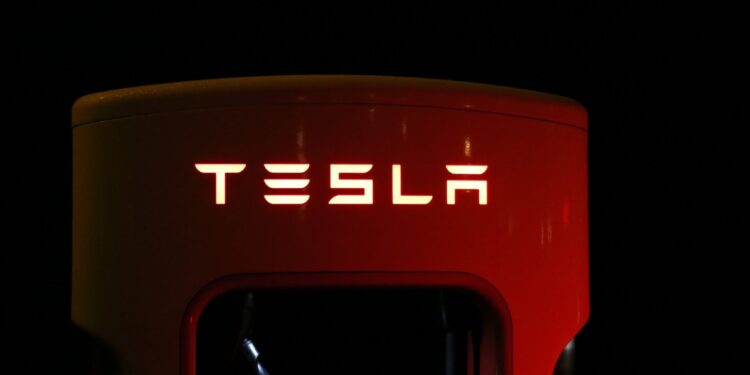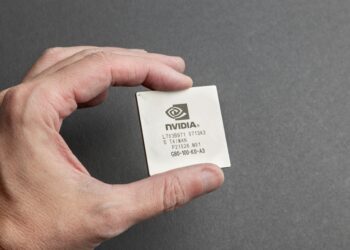An In-Depth Look at Tesla’s Vision for the Future of Technology
Tesla (TSLA), widely known for revolutionizing the electric vehicle (EV) market, is set to once again challenge the status quo with its ventures in autonomous driving, humanoid robots, and energy storage. As the company moves beyond its identity as just an automaker, it positions itself as a technological powerhouse capable of reshaping multiple industries. This evolution requires a fresh valuation perspective as Tesla prepares for its highly anticipated Robotaxi Day on October 10th, where it will reveal its autonomous vehicle advancements and innovations in robotics.
Tesla’s Robotaxi Revolution: What to Expect on October 10th
On October 10th, Tesla is set to host its Robotaxi Day, an event initially scheduled for August but delayed to allow for further design refinements. The focal point will be the unveiling of Tesla’s first true robotaxi, dubbed the “Cybercab,” a vehicle with no steering wheel or pedals, designed to operate entirely autonomously. In addition to the robotaxi, Tesla CEO Elon Musk has teased the unveiling of another new product, which industry insiders speculate could be a lower-cost EV model, likely a hatchback or crossover dubbed “Model 2.”
Tesla’s robotaxi initiative is more than just an exciting new vehicle; it represents a profound shift in urban transportation. The company’s vision includes a hybrid network of Tesla-owned robotaxis and customer-owned vehicles, allowing owners to share their cars in a rideshare model, earning revenue much like Airbnb hosts. Production of these autonomous vehicles will occur in Tesla’s Gigafactories in Texas and Shanghai, where the local government is reportedly very supportive of the robotaxi initiative.
While the excitement surrounding the event is palpable, market analysts caution against immediate euphoria. There’s a possibility of a “sell the news” market reaction as expectations have built to an exceptionally high bar. Nonetheless, the Robotaxi Day is expected to solidify Tesla’s leadership in autonomous driving, positioning the company to capitalize on one of the most lucrative applications of artificial intelligence.
Tesla’s Competitive Edge in Autonomous Driving
Tesla’s dominance in autonomous driving stems from several key factors that differentiate it from competitors. First, the company has amassed a significant capital advantage, exiting Q2 with $23 billion in net cash. This financial strength allows Tesla to tackle the immense challenges of developing end-to-end autonomous driving systems, which many competitors, such as Argo AI and Motional, have struggled to sustain.
Tesla’s second major advantage is its unparalleled access to data. With nearly 1.9 million vehicles in North America equipped with its Full Self-Driving (FSD) hardware, Tesla has collected over 700 million miles of real-world driving data. This vast trove of data, captured by eight cameras on every vehicle, gives Tesla a significant edge over competitors like Waymo, whose smaller fleet limits its data collection.
In addition, Tesla is equipped with immense computational power. The company ended Q2 with 35,000 Nvidia H100 GPUs and aims to expand this to 85,000 by the end of the year. This computational firepower is crucial for training Tesla’s end-to-end AI models, which are central to its autonomous driving ambitions. Tesla’s in-house Dojo chip, while not yet as powerful as Nvidia’s offerings, is being developed to close this gap over time.
Lastly, Tesla’s autonomous driving hardware is cost-effective, with a price tag of less than $1,500, a far cry from the six-figure costs of Waymo’s autonomous systems. This cost advantage, combined with its reliance on cameras rather than expensive lidar systems, allows Tesla to offer a more affordable solution while maintaining superior functionality.
Energy Storage: A Growing Powerhouse for Tesla
While Tesla’s focus on autonomous driving and robotics captures headlines, its energy storage business is quietly undergoing a significant transformation. Tesla’s energy storage systems (ESS), which include products like the Megapack and Powerwall, are set to generate over $13 billion in sales by 2025, representing a major growth and margin inflection point for the company.
In Q2 2024, Tesla deployed a record 9.4 GWh of energy storage, a 157% year-over-year increase. The company’s Lathrop, California, facility is expected to ramp up production to 40 GWh, and Tesla’s Shanghai factory will begin producing ESS units in Q1 2025, further boosting capacity. This expansion positions Tesla as a leader in the global energy storage market, competing against firms like Fluence and BYD.
The primary driver of this growth is the increasing demand from utility companies seeking to store renewable energy to stabilize power grids. With global energy storage deployment forecasted to grow from 155 GWh in 2024 to 445 GWh by 2030, Tesla is well-positioned to capture 15-20% of the global market.
Humanoid Robots: Tesla’s Optimus Takes Shape
Beyond transportation and energy, Tesla is venturing into robotics with its humanoid robot, Optimus. Expected to begin production in 2025, Optimus is designed to address labor shortages and demographic challenges, particularly in regions like Japan and China, where aging populations are creating workforce gaps.
Optimus will leverage Tesla’s existing AI infrastructure, with production initially focused on internal use in Tesla’s factories before expanding to external sales. By 2030, the global market for humanoid robots is projected to reach $6.25 billion, growing to $30 billion by 2035. Tesla aims to produce over 250,000 units by 2030, with prices eventually dropping below $10,000.
While some may view humanoid robotics as a futuristic concept, Tesla’s foray into this field highlights its ambition to address real-world problems like labor shortages through cutting-edge technology.
Conclusion: Tesla’s Future Beyond Automobiles
As Tesla looks beyond its role as an electric vehicle manufacturer, the company is poised to reshape multiple industries through its advancements in autonomous driving, energy storage, and robotics. With significant events like Robotaxi Day on the horizon and a clear path to growth in various sectors, Tesla continues to challenge conventional thinking and redefine what’s possible with technology. As a result, Tesla’s unique vision for the future demands a new valuation framework that reflects its status as a multi-industry disruptor.
You might like this article:Cathie Wood’s Ark Invest Makes Bold Moves: Buys DraftKings, AMD, and Tempus AI; Sells Palantir and Unity











